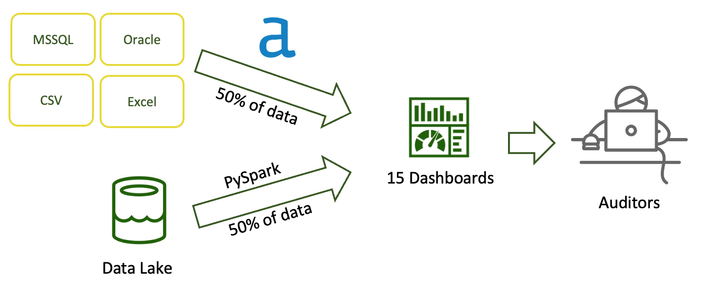Alter.Nation
Community news, customer stories, and more!- Community
- :
- Community
- :
- Learn
- :
- Blogs
- :
- Alter.Nation
- :
- Defining the Value of Alteryx Projects
- Subscribe to RSS Feed
- Mark as New
- Mark as Read
- Bookmark
- Subscribe
- Printer Friendly Page
- Notify Moderator
by Johnny Daly and Stephan Thodesen (@Stephan)
Saving Time
A few years ago, we got into a deep discussion with some users from the audit team at a large company in Germany. While it would be an exaggeration to say that the conversation was heated, there were definitely strong views.
On the one hand, we had users who thought that what was most valuable was measuring how many hours of effort were saved. These were not insignificant; they had automated the entire process, everything was now scheduled, and what used to take 50 hours a week previously now took, well, they were a bit self-conscious to say:
“I don’t actually do anything anymore. In the morning, I come into the office, I make a coffee, I open my laptop, I check that the job ran and… that’s it. That’s all my data preparation. I can’t tell anyone that because they just wouldn’t believe me.”
Multiply that across the year, and all of a sudden, you have some pretty hefty and tangible numbers in front of you in terms of hours saved. It’s like getting an employee who knows your business inside out who does 25% overtime every week.
The other aspect that was incredible from a time savings perspective was their auditors. They started to save thousands of hours of effort because they had all the data they needed at their fingertips, without having to go back and
forth with business units and their IT teams to get the right information.
Figure 1: Auditors ask business units for information, who then ask their IT teams for the data. This generally takes a few months to get everything right.
The other users looked at the situation differently. They acknowledged that the savings were impressive, that their colleagues were now free to work on higher-value activities, and that, in itself, was precious. There was, however, something bigger they thought of.
Strategic Improvements
Alteryx, as part of a larger transformation initiative, had radically changed the way they worked; the Audit Function, they told us, always had one very difficult decision to make: which business units do you audit?
The traditional way of doing this is not particularly scientific, you guess. It can be an educated guess that is informed by experience, or you can guess in specific patterns to not put the same business units through the ordeal too often. Ultimately, as an auditor, you wish that everyone has everything in order and if not, you can very quickly find units that are perhaps struggling a little bit and support them to get back on the right path.
What they set out to do then was to move away from randomly selecting business units to audit and completely change the way they worked. They wanted to be able to predict who would have a higher probability of needing support from the audit function. This would completely alter everything: once the environment had been set up to bring the required data together (and it did take some time), they would be able to automate everything and be able to score different business units on the level of risk they presented. The outcome would be that they would be more compliant from an audit perspective, reducing the probability of being fined for non-compliance.
Figure 2: Auditors now access the data they need directly from dashboards
What our users eventually concluded was that it was important to realize how interconnected these 2 sets of value were. On the one hand the overarching strategic initiative did have a big impact on how work was done and reducing risk. On the other, the thousands of hours saved for all these individual people was immensely beneficial to both them personally and the company.
Conclusion
As Customer Success Managers, we often have discussions with customers around value and Return on Investment. We see the majority falling into 5 main categories:
- Re-imagine existing processes to improve top & bottom line
- Improve compliance and reporting accuracy
- Improve top line by selling new data products
- Enable an organizational transformation, like de-centralizing decision-making
- Build a culture based on speed, insights and objectivity
While there are many that see data monetization as the key driver for value creation and that would cover areas primarily focused on process optimization and selling new data products, we believe that the organizational and cultural benefits that can be derived from having a data-driven approach are just as important. Over time, we reached the same conclusion that our friends at the German company did, namely that the two need to go hand in hand to achieve the best benefits for everyone.
You must be a registered user to add a comment. If you've already registered, sign in. Otherwise, register and sign in.

